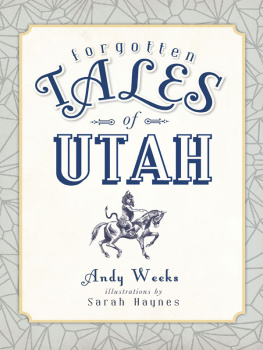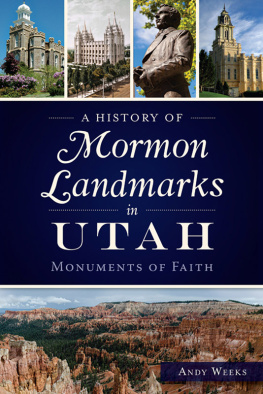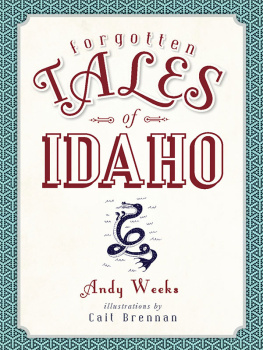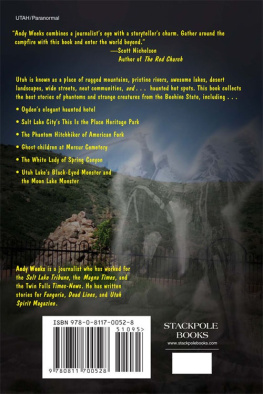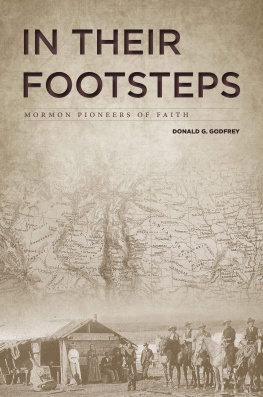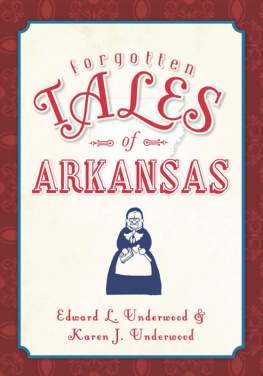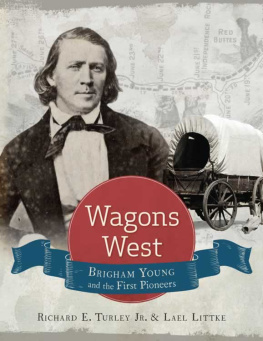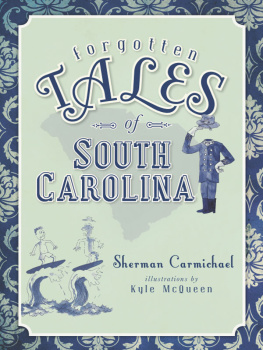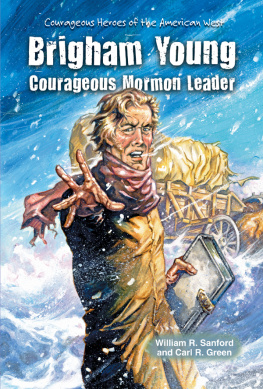

Published by The History Press
Charleston, SC
www.historypress.net
Copyright 2017 by Andy Weeks
All rights reserved
First published 2017
e-book edition 2017
ISBN 978.1.43966.158.1
Library of Congress Control Number: 2017934955
print edition ISBN 978.1.46713.730.0
Notice: The information in this book is true and complete to the best of our knowledge. It is offered without guarantee on the part of the author or The History Press. The author and The History Press disclaim all liability in connection with the use of this book.
All rights reserved. No part of this book may be reproduced or transmitted in any form whatsoever without prior written permission from the publisher except in the case of brief quotations embodied in critical articles and reviews.
In memory of my dad, Floyd V. Weeks.
I hope youre pleased with my efforts. I miss you!
Contents
Acknowledgements
As this work goes to press, I want to say thanks to the usual cast of characters. Without being cumbersome, Id like to mention just a few of them here.
As always, I appreciate the encouragement of my wife, Heidi. Shes my shining star, and I appreciate the light shes offered me as Ive tried to juggle multiple deadlines and projects. Many thanks to my son, Brayden, for his quiet example and encouraging words about my writing projects. I am doubly excited about his accomplishments.
I have nothing but good things to say about my acquisitions editor, Artie Crisp, who has been a pleasure to work with on this book, as have others at Arcadia Publishing and The History Press, including production editor Ryan Finn for polishing the manuscript. I appreciate the illustrative work of Sarah Haynes that helps complement many of the stories contained herein.
Im thankful for the available resources, in print and online, of the Church of Jesus Christ of Latter-day Saints, Brigham Young University, state government and park service agencies and many other organizations.
Lastly, I appreciate the journalists, historians and authors from whose sources I gleaned. As a fellow journalist and author, I know how thankless our job can be at times, especially in the digital world of bloggers and alternative news sources. But I very much appreciate your efforts and writingsmost notably, for this book, the fine reporters and editors at both the Deseret News and the Salt Lake Tribune.
The book and its interpretation on Utah history and events, however, are strictly my own, as are any mistakes or wrong conclusions. That said, Ive tried to present the stories as factually as my time and research and understanding would allow. While the task of completing the manuscript at times seemed laborious because of many other pressing demands, Ive enjoyed revisiting and learning Utah history and its interesting and sometimes quirky and tragic tales. Now that the book is finished, I hope you enjoy the reading experience. Thanks for giving it a try.
Introduction
History doesnt repeat itself, but it does rhyme.
Mark Twain
Utah. It wasnt a name the early pioneers had chosen. They wanted to name the territory Deseretwhich they didbut when statehood was petitioned, legislators named the new union member Utah, a word that in one Ute vernacular means top of the mountains.
Its a fitting name, Utah. Its a state full of mountains. One of its most popular ranges, the Wasatch Mountains, stretches across the Great Salt Lake Valley, giving it its eastern wall. On the west side of the valley lie the Oquirrh Mountains, the two ranges forming a true basin or bowl. The pioneers believed that the valley was designed by heaven for a specific purpose: secluding the early Latter-day Saints within this protective basin.
Long before the Mormons arrived, however, many others had experienced this desert bastion, whether they lived here as Indians or traversed here as explorers, fur trappers and missionaries. Thus, when the pioneers arrived in the summer of 1847, the territory that would one day be called Utah already had a history.
This book is not about that history. Nor is it a chronological history of the state or even a snapshot history of Utah. I want to tell you that right off, before you start reading the book or, perchance, before you purchase it at the bookstore. I want you to know what youre getting into before you buy it.
As you can see by its size, a true history of Utah would nearly be impossible to tell in such a small volume as this. Like my book Forgotten Tales of Idaho, this volume instead is about some of the lesser-known or overlooked tales from the states history, as recalled in newspaper articles and other sources. This book really is a snapshot of a snapshot of certain stories that, put into the larger puzzle that is Utah, gives us a glimpse of its fascinating history. That puzzle, far from complete, is still being put together.
Forgotten Tales is a presumed title. Chances are youre familiar with some of these stories already. If youre a member of the LDS Church, for instance, you might very well be familiar with some of the stories in Parts I and II, but they are tales that likely would be unfamiliar to a larger Utah audience, thus their inclusion in the book. This book is also not an in-depth study of the stories shared, but rather, the tales are written in a format aimed to offer quick and easy reading for users of this volume. If youre looking for more detailed information, youll have to look elsewhere. That kind of book is not this one.
It is a book, however, that was fun for me to research and write. I hope, in turn, that youll find some enjoyment in reading the stories Ive selected to share with you in the following pages and that theyll encourage you to uncover some of the many other tales of Utahs colorful and eventful past.
Part I
Mormon Utah
Members of the Church of Jesus Christ of Latter-day Saints first came to the Salt Lake Valley in 1847, when the territory was still part of Mexico. They wanted to name their new home Deseret, which means honeybee in the Book of Mormon, but when statehood was imminent, legislators petitioned the name Utah. The gentiles may have won that battle, but it was the Mormons who first caught the visionliterally, as we shall seeof living and thriving in the Great Basin and making Utah what it is today. It seems only fitting that we start the book with tales from Latter-day Saint history as they concern the Beehive State. Utah is many things, but in many respects, its still Mormon Country.
BRIGHAM YOUNG HAS THE FEVER
Just because something is tradition doesnt mean its historically accurate. Case in point: Pioneer Day. If you dont know the history surrounding this popular day in Utah, you may be led to believe that the Mormon pioneers arrived in the Salt Lake Valley on July 24, 1847. That usually is what you hear, and it is indeed the day Brigham Young and his company of Latter-day Saints, about 148 in all, entered the Great Salt Lake Valley. But they were not the first Mormons to arrive in what later would be known as the Beehive State. That happened three days earlier.
To the Rocky Mountains or Bust
Even before the Church of Jesus Christ of Latter-day Saints was officially organized on April 6, 1830, in Upstate New York, its founder and followers had been persecuted by apostates, naysayers and violent mobs. It was an act of violence that led to the Prophet Joseph Smiths death on June 27, 1844. Those who struck down Smith and his brother, Hyrum, in cold blood while imprisoned in Carthage, Illinois, wrongly believed that the death of Joseph Smith would put an end to Mormonism, a religion not unlike the one Christ established in the New Testament but that was to the anti-Mormonsas Christs teachings was to the Pharisees in his daya blasphemous perversion of scriptural intent. When the persecutors saw that the Mormon cause was greater than its Prophetthat the Latter-day Saints continued to amass converts and complete a temple in Nauvoo, Illinois, for instancethey doubled their efforts to persecute and diminish the newfound religion, and the Saints eventually put their boots and wagon wheels to Americas overland trails and headed west.
Next page
